




































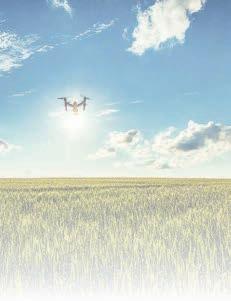









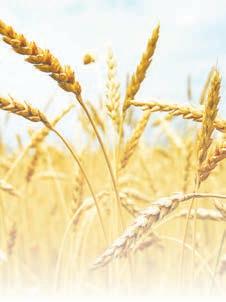






















Ariana Schumacher / Agweek
The lab at Dakota State University is set up to feel like researchers are inside the tractor cab.
Ag Educator of the Year .............................................................. 3
Grassland Coalition..............................................................6
Spring Planting.....................................................................9
Schaunaman paves way in ag policy..................................12
Dairy Fest............................................................................14
Changing climate is impacting farmer..............................17
Garden rows ........................................................................18
Publisher JONI HARMS
Editor LUKE HAGEN
Advertising Director LORIE HANSEN
Layout Designer JEN PHILLIPS
South Dakota Farm & Ranch is an agricultural publication dedicated to informing SD and Midwest area farmers & ranchers about current topics and news.
This publication fits the niche of our unique farmers and ranchers of the Midwest, and the diverseness we have in our area. Although the Missouri River divides our state, we are all South Dakotans and thank the land for supporting us each and every day.
Our readers may be livestock ranchers or row crop farmers, and everywhere in between, however, we all have a common goal in mind. We feed and support the growing population, and want the next generation to find that same love and support that agriculture can offer. We’re all SD Farmers and Ranchers’ and when you advertise in South Dakota Farm & Ranch, you are immersing your company, product, and service into a growing community of dedicated farmers and ranchers. Welcome to South Dakota Farm & Ranch!
To subscribe to this FREE publication, contact The Mitchell Republic.
Contact Us PO BOX 1288 • MITCHELL, SD 605-996-5514



By Kennedy Tesch Agweek
HARRISBURG, S.D. — Agriculture has always played an important role in Tara Fastert’s life, and as an agricultural educator at Harrisburg High School in Harrisburg, South Dakota, it’s been her mission to share that with her students.
Fastert was named South Dakota’s 2023-24 Ag Educator of the Year during the South Dakota State FFA Convention held in April in Brookings.
After growing up on her family’s farm in northwestern Iowa, Fastert is still actively involved in their corn, soybean, cattle and hog operation, along with her teaching responsibilities in South Dakota. During the farm crisis of the 1980s, she said her dad pushed her to attend college and secure a job off of the farm.
“I knew in high school that I wanted something to do with agriculture, I just had to figure out what it was going to be so I could still be connected to it,” Fastert said. “Teaching others about agriculture seemed like the right fit.”
With 15 years of teaching experience under her belt, it is safe to say Fastert found the right fit. She has been teaching at Harrisburg for the last 10 years and enjoys educating students who generally have little to no agricultural background.
Fastert recalls one conversation she had with a student in class where she taught them the difference between a dairy cow and a beef cow.
“There’s a difference and you should care. You drive down the road and I want you to know if it’s a beef cow or a dairy cow and which one’s going to give you meat and which one’s going to give you milk,” Fastert told the student. “Agriculture is important in our everyday lives, we use it every day.”
Along with the help of two other teachers, Fastert advises one of the largest and fastest-growing FFA chapters in the state.
“When I started in Harrisburg, I think we had 80 kids in FFA and about 700 total in high school,” Fastert said. “Today we are pushing over 1,800 kids in high school and we have 350 kids in FFA.”
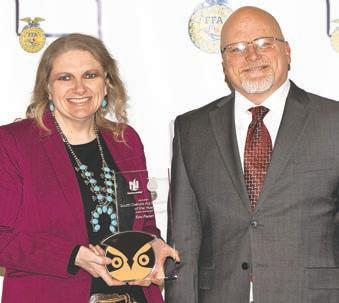
Tara Fastert recieved the South Dakota Ag Educator of the Year award during the 2024 South Dakota FFA Convention held in April in Brookings.
Fastert’s influence on the ag education program has even inspired one of her students to pursue the same path.
Halle Swenson, a senior at Harrisburg High School, plans to attend South Dakota State University in the fall and major in agricultural education.
Before her immersion into the school’s agricultural program her freshman year, Swenson said she was the quiet student who sat in the back corner of the classroom.
“Fastert was the first teacher I ever clicked with here,” Swenson said. “I stepped into my first ag class, which was our intro to agricultural mechanics, and it was really out of my ballpark. I’d never worked with tools or seen a table saw in real life so it was definitely an experience.”
Swenson said with Fastert’s guidance, she was able to get out of her comfort zone through FFA. Whether it was running for office or getting the opportunity to coach one of the chapter’s competition teams, Fastert was there for her every step of the way.
“She came up to me and she saw something in me that I didn’t see myself. She always pushes me to do something else. I don’t think I’ve ever had a moment where I was just kind of stagnant,” Swenson said. “She really pushed me to new heights and I wanted her to get recognized for everything that she’s done.”


By Ariana Schumacher Agweek
MADISON, S.D. — With precision agriculture technology becoming more and more advanced, how do farmers keep their equipment and records safe from cybersecurity breaches?


Students and researchers at Dakota State University in Madison, South Dakota, are able to climb in the tractor seat and conduct research surrounding cybersecurity in farm equipment in their on-campus tractor cybersecurity lab.

“The security aspect of things is just trying to make sure that all of our devices, whether they are smart tractors or any sort of even smart tablets or anything that farmers are using are secure and safe and aren’t leaking any information that they shouldn’t be,” said Austin O’Brien, associate professor of computer science and Master of Computer Science coordinator at Dakota State University.
They are also looking at the impacts of artificial intelligence.
“We are working on different projects of how to use AI in various aspects, whether that’s gathering data so farmers can make better decisions, ranchers same thing, or they can also perhaps have higher yields, things of that nature and then autonomous self-driving tractors, things along those lines,” O’Brien said.
The goal of this research is to make sure our farm equipment is secure. They have joined forces with various industry partners including AI Sweden, South Dakota State University and Case IH New Holland.

“We want to make sure that really nefarious agents, you know, cyber hackers, attackers or whoever, they are not able to gather information from these devices,” O’Brien explained. “Also, so that they might not get in and then also take control of any of these or even put bad information inside of that.”
The research set up is unique and makes students and researchers feel like they are actually on the farm.
“We have kind of the set up, I would say almost a little more for fun. We’ve got the driver’s seat and everything and so there is a simulator that is attached to it that is kind of like driving a tractor,” O’Brien said.
But the lab is for more than just fun.
“Maybe the more important part is the stuff that we don’t show,” O’Brien explained. “We are working with CNH and they have proprietary hardware, so we aren’t really allowed to show the actual hardware, but it is more of a smaller device that we have inside our labs so that way we have a good idea of what kind of hardware we are working with, where the inputs and the outputs are and what kind of power that it has.”
Those involved in the project are excited to be working on something that can make an impact on South Dakota’s largest industry: agriculture.
“Students really like the idea that we have been able to research and work on something that actually has a real impact on the South Dakota economy,” O’Brien said.
U.S. farmers and ranchers rapidly have been adopting technologies into their operations. The 2022 U.S. Census of Agriculture said the percentage of farms with internet access continues to grow, now standing at about 79%. The 2022 Ag Census was the first to list precision agriculture adoption as a farm characteristic, and it estimated that less than 12% of farms were using the technologies. However, among the highest grossing farms — those that sell more than $1 million in farm products — precision ag technology use was at about 39%.
Adoption has been more swift in row crops. A February 2023 USDA study, “Precision Agriculture in the Digital Era: Recent Adoption on U.S. Farms,” said farmers were using auto-steer and guidance systems on more than 50% of U.S. acreage planted to corn, soybeans, winter wheat, cotton, rice and sorghum.
Page 5
That’s up from an estimated 10% in the early 2000s.

The use of precision agriculture technologies in row crops holds the possibility of reducing inputs and environmental footprint by more precise placement of seed and fertilizer and by more precise field coverage with less overlap thanks to guidance systems. Yield monitors can provide valuable information about field performance and resource allocation. Remote sensing and autonomous equipment could offer valuable information or efficiency without increasing labor.
Factors holding farmers back from adopting the technologies include cost and technical knowledge. But another risk factor for many is whether the data and connection to the farm can be protected.
While agriculture and food companies have dealt with disruptive and dangerous hacks to technology, cybersecurity breaches in farm equipment have not happened in the United States yet.
“We haven’t seen anything of that nature happen, but we are always wanting to stay a step ahead of that for sure,” O’Brien said. “We know


that with the Ukraine conflict that’s out there, we have seen Russia basically do different types of attacks on different infrastructure, so we want to make sure that our infrastructure is a step ahead of that.”
Cybersecurity professionals can kind of determine peak times attackers may look to target farming equipment.
“Which is different from some areas of cybersecurity,” said Mark Spanier, associate professor and interim dean of the College of Arts and Sciences at Dakota State University. “In agriculture, you know that somebody is wanting to attack like right at harvesttime, because they can put all of their efforts in that short window of time. If they can be disruptive during that window of time, they can create all sorts of havoc.”
But having more specific target attack times can also be challenging.
“So, it’s an interesting balance of ‘I know when somebody is likely going to attack so I can put all of my efforts in’ but it also means that your attacker can put all of their efforts in at that very specific point as well, so it creates an interesting dynamic,” Spanier said.
And there are ways that farmers right now can be proactive in protecting their equipment technology.
“The onboard computer systems that they are going to have on their

Ariana Schumacher / Agweek Case New Holland is one of the partners in Dakota State University’s cybersecurity program.
pieces of equipment, ensuring they are updated and with the current specs on things, as with anything you are wanting to make sure things are up to date so if there has been a known vulnerability that has emerged, that is then updated with the patches that it needs to have,” Spanier said.
“Just be cognizant of what you are doing, where you leave your data, where your data exists, so if you are uploading data to the internet, just make sure that you know exactly where you are uploading to,” O’Brien said “Maybe that’s certain
websites if you are working with different companies or businesses. Just be aware that you are working directly with them and maybe not through various other services.”
But overall, this research is to serve as a prevention tool.
“That kind of concern, while it’s there, just know that we are actively working on things, so we don’t want to present it as a doom and gloom situation, we are wanting to stay a step ahead,” O’Brien said.
“We haven’t seen any big issues but that’s because people are actively working to stay in front of it.”




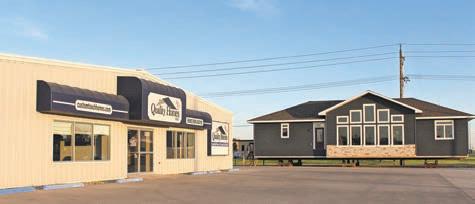











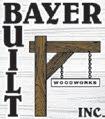








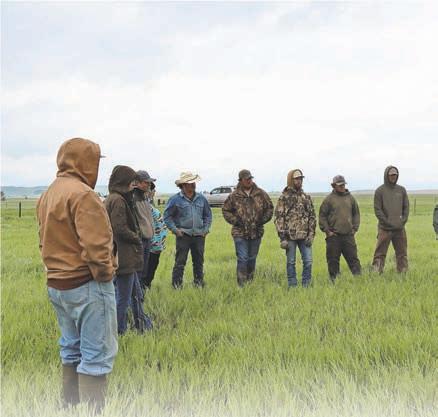
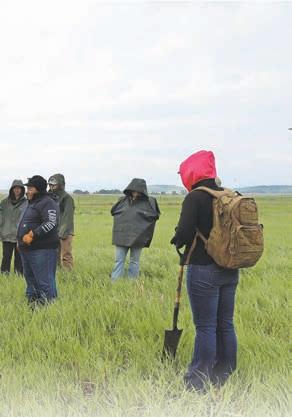



Tuesday, July 16
5:00 pm - Community Kicko BBQ Free food and drinkCome checkout the new arena!



Thursday, July 18
8:00 am - Extreme Bull Riding Greased Pig Contest
Friday, July 19
8:00 pm - 1st Rodeo Performance
Mutton Bustin’ - Kids Candy Toss
Saturday, July 20
10:30 am Rodeo Parade - Mitchell Main Street 8:00 pm - 2nd Rodeo Performance
Mutton Bustin’ - Kids Candy Toss

All events held at the ALL NEW ARENA AT STAMPEDE PARK 6320 North Ohlman St. unless otherwise noted.





Sunday, July 21
10:00 am - Cowboy Church Service
11:00 am - Chilli Cooko KMIT and Twin City Fan Family Funday 8:00 pm - 3rd Rodeo Performance - Mutton Bustin’- Kids Candy Toss


Kennedy Tesch Agweek
PUKWANA, S.D. — For 32 years Larry Wagner has focused on implementing rotational grazing practices on his ranch near Pukwana, South Dakota. As a board member of the South Dakota Grassland Coalition, Wagner shared some of his knowledge by hosting a pasture walk on May 21.
Wagner has around 135 head of cattle and uses direct-marketing to sell his grass-fed, grass-finished beef. He runs his cattle on land that was once used as crop ground but has since been converted back to native warm season grass, a transition he said took around five years.
“My favorite combination is big bluestem, Indian grass and sideoats, I think it’s a great mix,” he said.
Another change Wagner implemented that is considered unusual for many ranchers across the state was switching his calving season from early March to May.
“It’s just unbelievable what it changes. You don’t realize when you get into warm weather how much it changes, how much you cut down your workload,” he said.
“One thing you never really think about is, you got so much more daylight that you’re not out there in the dark.”
Jenita Derga, a private consultant from Wild Prairie Solutions, helped coordinate the pasture walk and works closely with ranchers on grazing management and strategies to increase profitability while not depleting their grass resource.
“I get to be out here and talk about plants, soil and get to meet with ranchers and just kind of foster conversations, which is really what the pasture walks are really about, is just getting people having conversations within a network of like-minded people that are maybe doing management that they’re also doing or management that they want to start trying for one reason or another,” Derga said.
“The pasture walk was really to have folks come and see how Larry is calving,” she said. “So there’s lots of conversations about that and then we also talked about the grassland ecology and the soil biology and really, why aside from calving in May, Larry has a diverse grazing system.
GRASSLAND: Page 8










• RubberWater Tanks 5 to 13ft
• Insulated Concrete covers (Covers to fit all tank sizes)



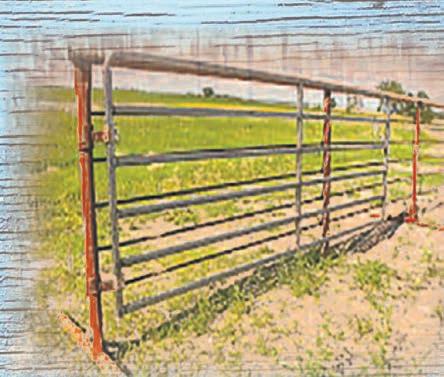


• Tanks with steel & concrete bottoms
• Guardrails • Pointed Fir Posts


• Wildlife escape ramps • Railroad Ties
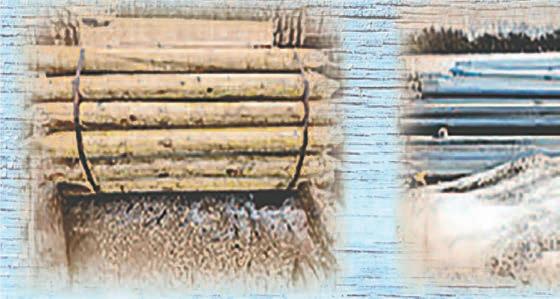










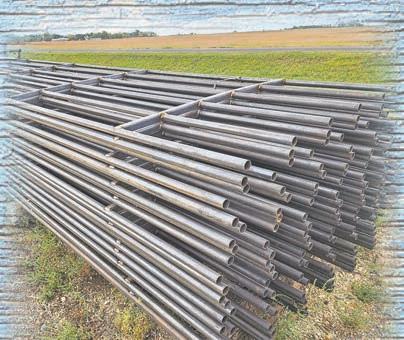








Cattle Guards
Cattle Guard Blocks
Cement Tank Pads • Windbreak Panels • Bale Feeders
• Well Pipe



• Creosote Treated Posts


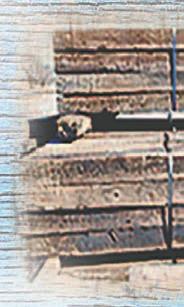

• Continuous Fence Panels

















So he’s moving cattle frequently throughout the year to combat any overgrazing or any detrimental effects that we would have on our system so that he can essentially grow more grass.”
Derga also had pasture walk participants clip an ounce of grass. This activity demonstrated how just growing one more ounce of forage, per square yard equates to 300 pounds per acre, which can then equate to an extra cow for every 40 acres each year.
“Just growing that much smaller amount more could create the ability for any producer that’s running cattle to run more cows on the same land base without having to find a new lease or buy land or any of the expenses that come along with that,” Derga said.
Upping productivity on land that producers already own can become a strategy to increase profitability across many operations.
“When I’m working with ranchers through consulting and their grazing system, that’s something that we talk about is just how we can grow more grass and a lot of times, the question usually comes up is like, “how can I run more cows?” Or, “how can I get another lease” or “how can I afford to buy land?” And it’s really not about any of that,” Derga said.
“We just need to grow more grass on the ground that you already have. So it’s kind of a mindset shift, to get people thinking that maybe I shouldn’t be thinking that I need more land or that I need to run more cows, I just need to grow more grass and you know, let nature kind of take care of it from there.”
Derga points out that when it comes to pasture management, a diverse system is the ultimate goal and can be met by offering rest and recovery to the different plant species a pasture might hold.
“Having that diversity can extend our grazing season beyond what
it would ever be in a monoculture. So that’s always the goal of these systems and that diversity then fosters diversity within our soil profile, and we really can’t ever have a complete conversation about proper grazing management without also talking about our soils,” she said.
While the term “management intensive grazing” can be somewhat intimidating to those who may think it involves moving cows every day or putting up temporary fencing, Derga said that it is not always as labor intensive as one might think and can be extremely beneficial with the changing weather conditions experienced across the state.
“That rest and recovery just allows that system to become so much more resilient. In my experience, there’s usually a point of when people kind of get this information. They’re like, yes, I want to do this and then they start somewhere and then they continue on to this point of actually getting into what I would consider this management intensive system and spending a lot of work in order to become really efficient in grazing, and then they generally do that for a couple years and then


they generally come back off that — they really want to find that line,” she said.
Derga said that when producers are able to find that line, they are often harvesting everything possible on that land and getting the most economic benefit from their pastures.
On the flip side, producers have the ability to go back to their drought plan during dry years, which can include those daily moves, without having to sacrifice productivity.
“We don’t want to have to sell cows. If we up that efficiency by adding that extra labor, we can do that and not have to sell cows and then the next year they can come back to a normal year and that’s something that’s really beautiful to see,” Derga said.
The South Dakota Grassland Coalition has several more upcoming events for producers to attend to learn more about grassland management and more information can be found on their website.




















































































































































































































































































































Erik Kaufman / Mitchell Republic
About 84% of corn in South Dakota has been planted, like this corn in Hutchinson County, according to the latest crop progress report from the United States Department of Agriculture.
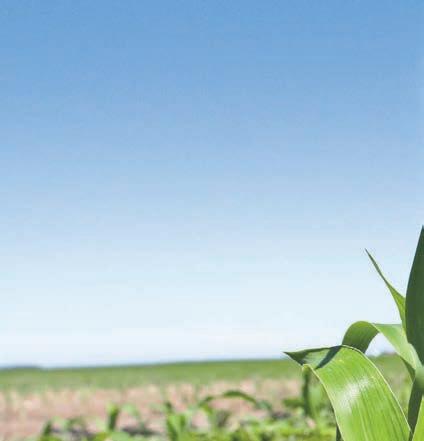





By Erik Kaufman Mitchell Republic
MITCHELL — Timely spring rains have the growing season off to a strong start in South Dakota.
That’s according to the most recent crop progress report from the United States Department of Agricultural Statistics Service, which indicated last week that most corn and soybeans in South Dakota have been planted with both crops showing signs of emerging.
“Progress has been pretty good for this spring,” said David Klingberg, executive director for the Farm Service Agency offices in Hanson and Davison counties. “Most of our corn is in, and most of our
soybeans are in, though there are some exceptions to that rule.”
The USDA crop progress report indicated that 84% of corn in South Dakota had been planted by May 28. That’s down slightly from 84% last year, though it is considerably above the 74% for the five-year average. Of that corn, 44% had emerged, which is also behind the 54% that had emerged at this time last year, but again near the 41% five-year average.
For soybeans, the report said about 58% had been planted across the state.
PLANTING: Page 10


































From Page 9
That’s well behind the 74% that had been planted by this time last year, but also near the 57% average. About 17% of those soybeans had emerged by May 28, which is behind both the 29% at this time last year and the 22% five-year average.
levels are similar, with 1% rated very short, 8% short, 82% adequate and 9% surplus.
That peak at “adequate” in the bell curve is the direct result of timely rains this spring. According to the National Weather Service in Sioux Falls, the Mitchell area is up in precipitation over last year, with precipitation to date this year coming in at 3.06 inches compared to 2.76 inches last year.
While some of those numbers show progress a bit behind last year, it’s an overall indicator of the increased moisture the state has received this spring. That’s led to good top and subsoil levels while simultaneously filling some low spots, making it a bit slower for some to get into the field.




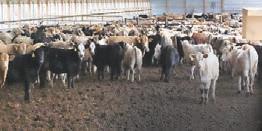































“Some of the guys who would like to be planting, quite a few had to go through some wet spots, and now it might be flooded out because of some of the recent rains we’ve received,” Klingberg said. “But nobody is really complaining about that so far.”
Topsoil moisture supplies are currently rated at about 1% very short, 4% short, 81% adequate and 14% surplus. Subsoil moisture
That extra quarter-inch is making a big difference, both in area topsoil and subsoil moisture levels, but also in the drought conditions the state has experienced for the last few years. The most recent map from the United States Drought Monitor shows virtually no drought conditions remaining in the state, with pockets of abnormally dry conditions in the northwest and southwest portions of the state. The driest portion of the state, according to the U.S. Drought Monitor, is listed as moderate drought and is located in the extreme northwest portion of the state in Harding County.
PLANTING: Page 11


“THERE’S NO SUCH THING AS A PERFECT YEAR, BUT THIS IS ON THE BETTER SIDE OF IT.”







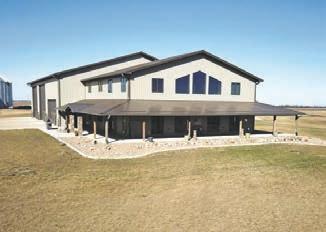
DAVID KLINGBERG










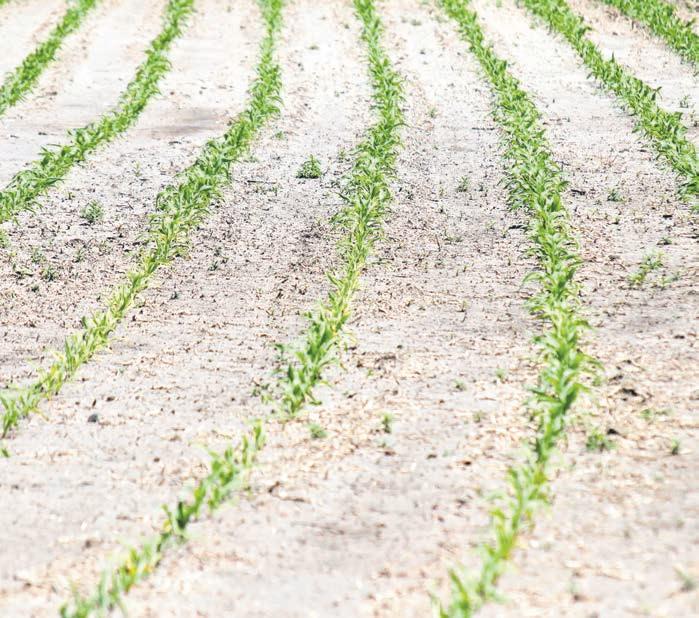
Erik Kaufman / Mitchell Republic Timely spring rains have allowed South Dakota farmers to make good progress this planting season. Above, corn in Hutchinson County begins to emerge from the soil this week.
The rest of the South Dakota map appears white, indicating no drought conditions.
With rains continuing to ease long standing drought conditions, most producers are willing to endure some wet areas in their fields in exchange for good soil and weather conditions this planting season.
“Most guys are pretty happy with how it turned out. There’s no such thing as a perfect year, but this is on the better side of it,” Klingberg said.
With producers edging closer to the end of the planting season, their eyes are now turning to the skies and the extended forecast.
Tim Masters, a technician with the National Weather Service office in Sioux Falls, said the forecast calls for slightly drier conditions and cooler temperatures over the next two weeks. That should help dry out some fields as the warmer months of July and August get closer. Like in many years past, rainfall has been hit or miss depending on location, with a difference of inches often recorded just a mile or two apart.
“June is usually pretty decent for precipitation, and we don’t really get into the hot and dry stuff until August,” Masters said. “It will feel
milder, and it will maybe be a little less stressful on the crops after a two-year drought.”
Winds were expected to pick up around midweek this week, with the strongest expected to top out around 40 miles per hour on Wednesday.
As the summer progresses toward July and August, Masters estimates that there is an equal chance of both above and below average precipitation, though he expected the long range forecast to lean more toward average temperature and rainfall.
“Not real hot, not real dry, but we’ll see how that pans out,” Masters said.
Klingberg also noted that some producers were putting up rye this spring, which does well in wetter conditions like producers are seeing this year.
For the most part, Klingberg said most producers are happy with where they’re at in terms of moisture and could now use a dry spell to get as many acres planted as possible while also handling other yearly tasks that come along at this time of the year.
Weed spraying, haying as well as getting cattle to pasture and handling maintenance chores like repairing fences are chores that usually come along as planting nears completion. The deadline for producers to report their acres to

Farm Service Agency offices is also nearing, with the deadline set for July 15.
A long summer growing season is ahead, and just a little dry weather would allow farmers to get ahead of the game and catch up before the hot growing months arrive.
After that, the rains are more than welcome to return.
“If it turns hot they’ll want moisture sooner rather than later, but right now we’re happy with the moisture we got and could use a little time in the field,” Klingberg said.
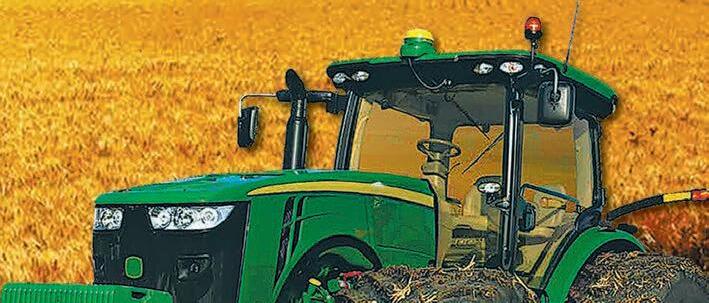















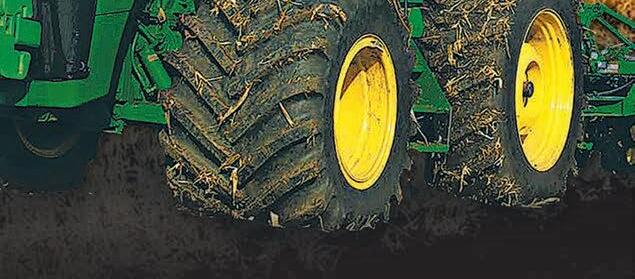










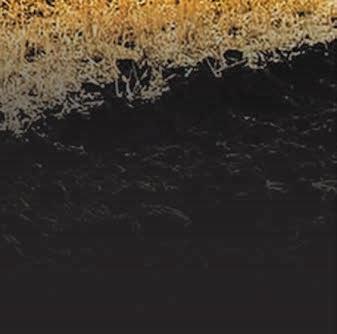



Kennedy Tesch Agweek

WASHINGTON — Kelcy Schaunaman grew up on her family’s corn, soybean, wheat and cow/calf operation near Aberdeen, South Dakota, and she’s using her agriculture knowledge through her career as a senior policy advisor for the administrator of the Farm Service Agency for the United State Department of Agriculture based in Washington, D.C.
Growing up, Schaunaman was active on the farm, helping out wherever needed as well as showing cattle through 4-H and junior shows.
“I was pretty active in the summer and when cattle needed to be worked or moved or whatever the case might be,” Schaunaman said. “Just helping out, all-hands-ondeck kind of activities on the farm. That was my childhood.”
Although she knew she wanted to be around agriculture in her future, she wasn’t exactly sure what path to take. While attending South Dakota State University for agricultural business, Schaunaman was able to get a taste for D.C. through an internship with former U.S. Sen. Heidi Heitkamp, D-N.D.
“I only went to D.C. one time prior, on our Farmers Union fly-in, and was really kind of excited about what was happening, and decided to intern with Sen. Heitkamp’s office. Then I went back to South Dakota, and kind of had sworn off D.C. because it had been such a culture shock, especially in the beginning,” Schaunaman said. “Then once you’re away from D.C., you feel like you’re missing out on the action

when you’re not here. You kind of take it for granted while you’re here and then when you’re back in South Dakota, you kind of feel that pull of the excitement that’s happening in D.C.”
After earning her undergraduate degree in 2016, Schaunaman interned with the South Dakota State Legislature and then accepted a position with the South Dakota Wheat Growers, now Agtegra Cooperative.
While working, Schaunaman still had an itch to be back in D.C. so she decided to attend law school at the University of South Dakota.
“After my first year, I came


back to D.C. and interned with the House Agriculture Committee under Ranking Member Collin Peterson. It kind of solidified that ag policy was the route I wanted to take,” Schaunaman said. “I always knew I kind of wanted to be involved in agriculture, I just didn’t know what that looked like. After being in D.C., I kind of realized that especially the federal policy, the farm bill, that was what I was really interested in.”
Schaunaman graduated from law school in May 2020 and went back to D.C. in February 2021. Now 30, she has been working as a policy advisor since March 2023.
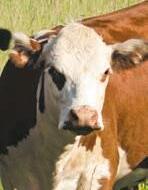


“Just being able to stay involved in agriculture and hopefully impact those that want to continue farming and support those people. Even though I’ve grown up on a farm and been around agriculture my whole life, there’s still so many aspects of agriculture that I’ve never seen before,” Schaunaman said. “Producers want to stay on the farm and it really keeps me going to try to keep them there. Thinking back to my dad and my uncle and those are the people that I think of when I’m thinking about policies and the choices that we make here in D.C. and, like, who those things affect.”































By Kennedy Tesch Agweek
VOLGA, S.D. — As the dairy industry expands across the state, South Dakota’s 11th annual Dairy Fest aims to educate and engage consumers on all things dairy.

“We wanted to create an activity for the consumers to come and see what an active dairy farm is like and meet and greet the owners of a dairy farm,” said Darrel Rennich, a strategic account manager for Zoetis and co-founder of Dairy Fest. “In addition to that, getting a chance to enjoy a grilled cheese sandwich, some SDSU ice cream and just spend the day on a dairy farm — it’s important to engage the public.”
While many challenges can come along with dairy farming such as high feed costs or low milk prices, the dairy industry has been put on spotlight in recent months due to the latest outbreak of the avian influenza.
Rennich said events like Dairy Fest provide the industry the opportunity to educate consumers on biosecurity measures and ensuring the quality of their product.
“Even with the bird flu that we’re facing right now, we want consumers to understand that, whether it’s milk or meat, that it’s still a safe
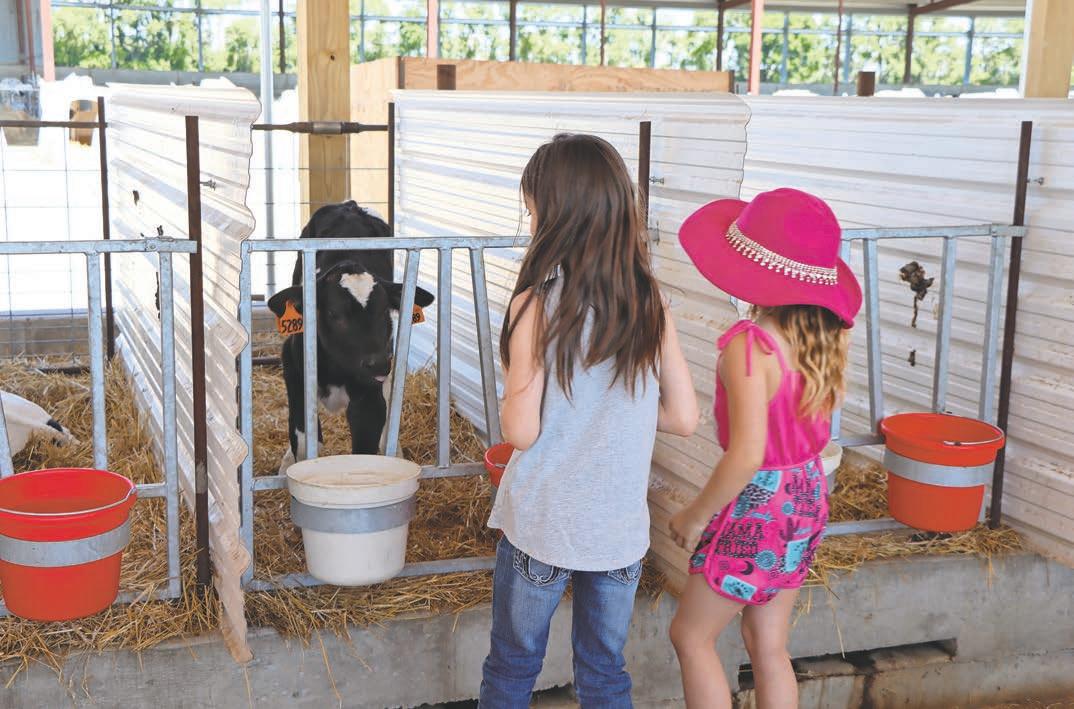
product,” Rennich said. “Through pasteurization of the milk, it has not been detected there and it’s safe
to consume. So even though the producers see challenges there, our consumers should feel like it’s still a


















































From Page 15
Dairy Fest is held each year in the Brookings, South Dakota, area, right in the heart of the booming industry along the I-29 corridor.
The free event included a tour of the South Dakota State University Davis Dairy Plant and invited the public to visit a local dairy farm, Old Tree Farms, near Volga, South Dakota.
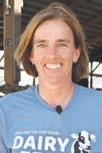
“I think as a committee, our goal is to give them that opportunity to see that their dairy products don’t just come on the shelf or in a cooler. They’re actually produced every day on an active dairy farm and let them see, feel and touch what’s going on every day,” Rennich said. “Whether it’s the cows that are consuming the feed, being milked in the parlor, the baby calves, how they’re housed and cared for, but just giving them that chance to get out and see an active dairy farm.”
Old Tree Farms is a family-owned dairy farm owned by Frido and Sonja Verpaalen. The Verpaalens
moved to the United States from the Netherlands in 2001 and started milking around 300 cows in 2002. Today, they milk 1,550 cows in their double-20 parlor and have a total of 1,850 cows.
The dairy is raising most of their own corn and alfalfa crops and harvests with their own equipment. In the fall of 2016, they started raising their own heifer calves, starting them in hutches and moving them into larger groups up to the age of six months, where the youngstock will be raised in Wynot, Nebraska, to return when they are pregnant. The latest addition at the farm is a calf barn with 80 individual pens to keep the young calves comfortable during the cold and snowy conditions in the winter.
Sonja Verpaalen said this is their third time hosting for Dairy Fest as she feels it’s important to showcase what they’re doing on their farm and tell their story.
“There’s a lot of talk about is it good for the environment, are you abusing the animals, what are you doing, and that’s what we’re trying to show that we’re taking care of our cows,” Sonja said. “We need to make a living and this is what we chose to do for our living and so we’re really trying to be good for our cows so they’re good for us.”
“WE WANTED TO CREATE AN ACTIVITY FOR THE CONSUMERS TO COME AND SEE WHAT AN ACTIVE DAIRY FARM IS LIKE AND MEET AND GREET THE OWNERS OF A DAIRY FARM.”
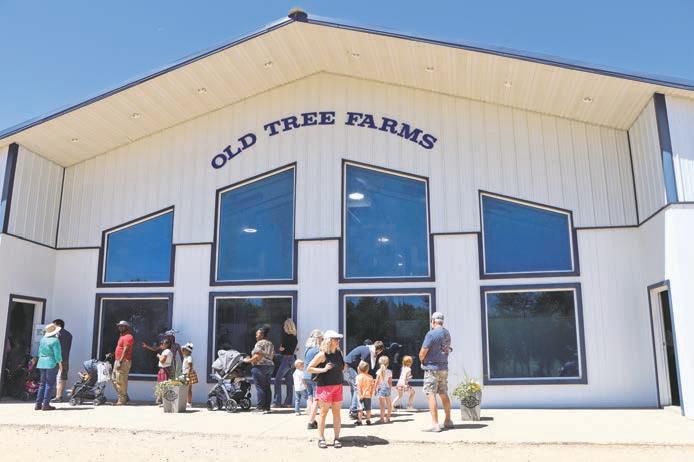
By Noah Fish Agweek
Farmers, ranchers and service providers face unique challenges in a changing climate, including emotional tolls of stress, anxiety, grief and trauma.
American Farmland Trust hosted an online conversation for Mental Health Awareness Month which highlighted some of the climatestress challenges faced by members of the ag community.
A 2021 survey of young people ages 16 to 25 in 10 countries found that 59% of those who responded said they were “very or extremely” worried about climate change, while 84% said they were at least “moderately” worried. More than 50% said they experienced strong, negative emotions about it, while three-fourths of respondents said they were frightened about the future.
American Farmland Trust’s Addie Candib, who moderated the conversation, said that climaterelated stress can take a toll on farmers, ranchers and food producers, who are “intimately entangled with natural ecosystems and weather patterns.”
“They experience firsthand the impacts of a changing climate on
those systems and may have deep connections to the land and places that are impacted by climate shifts and climate-related disaster,” Candib said. “As the agricultural sector specifically talks a lot about climate resilience and climateresilient practices, it’s key that we broaden our understanding to encompass the social and emotional elements of both community and individual resilience.”
Lian Zeitz works with the Climate Mental Health Network, which is a nonprofit that focuses on addressing the mental health consequences of the climate crisis. Zeitz said that climate change can be an “amplifier” for preexisting mental health conditions.
“If you were dealing with any sort of mental health struggles for a range of reasoning, the overlaying of climate change leads to an amplification of the challenges, or a heightened intensity of what you’re experiencing,” Zeitz said. “We already live in a world where there’s limited mental health resources and collective support and education, and so that amplification is a big issue, and I think farmers are experiencing that in their families.”
The “intensity” of the climate crisis makes matters even worse, Zeitz said.
“For instance, with last year being the hottest year on record in a long time, there’s a direct correlation between extreme heat and mental unwellness,” he said. “Farm workers and people that are in farming communities are often spending the most time in these extreme weather conditions, and then getting the most exposure to the changing landscape. And so the nature of how things are changing so rapidly causes also that amplification of challenges.”
Climate cafe groups, which are popping up around the country, allow people to talk as a group about their emotions around climate change.
“It’s an open source model for convening people in a community to process climate emotions together,” Zeitz said of climate cafes. “I would say those are on the lighter end of the spectrum of direct mental health support, and they’re great for community processing.”
Zeitz said he’d like to see more group therapeutic models in the U.S. where people can navigate what they’re experiencing in a way that feels supportive.
Caitlin Arnold Stephano is the program manager of the Farm Aid

Habitatiscrucialtothethingsweenjoyaboutourstate.Throughavarietyof programsandpartnerships,SouthDakotaGame,FishandParksisconstantly workingtopreserveandimprovequalityhabitat

Hotline (1-800-FARM-AID), which has been around for as long as the 40-year-old organization.
“We are the only national farmer hotline in the country,” Arnold Stephano said. “We’re not specifically a mental health hotline or just a crisis line, but we do take crisis calls, farm stress calls, and we do get quite a few of those. We also get calls from farmers all over with all sorts of questions, looking for resources.”
Arnold Stephano farmed for over a decade, starting right after she graduated college, but reached a point of not being able to afford to buy land or make farming financially work for herself.
“So here I am, now running the farmer Hotline at Farm Aid, and what really keeps me motivated in this work, and why I continue to do it, is I know what it’s like to be a young farmer that was not able to make that dream happen for myself,” she said. “I know how painful that experience can be. And if I can keep one farmer farming, and on the land, that makes all of this totally worth it to me.”
If you or someone you know is experiencing an acute mental health health crisis, please dial 988 or visit 988lifeline.org.
SouthDakotaGameFishandParks(GFP)hasavariety ofhabitatprogramsthatcanhelpfarmersandranchers. Theseprogramshelpenhancewildlifehabitatand assistlandowners’managementgoals.GFPprograms includewoodyhabitatplantings,grasslandandwetland restoration,andpastureandgrasslandinfrastructureto promoterotationalgrazing.
Toparticipate,callAlexElias,PrivateLandsHabitat Biologist,605.350.1725.
SecondCenturyHabitatFundprovidesworkinglands habitatasanalternativetocroppingmarginalland. Thefocusofthisprogramistoprovidewildlifehabitat onacresthatarenotasproductiveandgiveproducers anotheroptiononthoseacres.TheSecondCentury Habitatfundprovidestheseedandone-timepayment foreithera5-or10-yearcontract.Producersare allowedtohayorgrazeacresenrolled.Formore information,visit sdhabitatfund.org.



JENNY SCHLECHT
The Sorting Pen
I learned with interest about the problems to GPS systems in tractors caused by the recent solar storm. Neither farm on which I have spent my life — the one I grew up on in Montana or the one I live on now in North Dakota — has made much headway into the realm of precision agriculture in the field. (We’re cattle people, so cattlerelated technologies have made a lot more sense, cost-wise, for us.) My husband recently bought a used — probably very old to most medium- or large-scale farmers — autosteer setup that he and my father-in-law are dabbling with. But rains and untimely break downs meant it wasn’t in use yet when that solar storm wreaked
havoc on technology. Seeing the twirling GPS patterns shared on social media after the solar storm made me sort of glad we’re still guided mostly by row markers for the time being.
The idea of staying perfectly straight in the field is intriguing. There’s less possible overlap and waste of time and fuel. Straight rows when planting row crops means straight rows when harvesting and hopefully less crop lost to not hitting right on with the combine. Plus, it just looks good. I love to tease my husband when the corn rows along the roads are a little crooked or when something happened to jam up the planter and there are noticeable skips in the field where anyone can see them.
Of course, I have absolutely no room to talk. Every year when I plant my garden rows, I really have the best intentions of carefully planting in straight lines. Maybe

I’ll use a rope to guide me into not curving all over the place. Or I’ll lay down one of my garden implements to at least keep it straight in places. But I never do.
Take this year. It’s been rainy and chilly, even with a chance of frost fairly late in May.
GARDEN: Page 19

We deliverfinancialstrengthtohelpyougrow, attractiveratestogiveyouanedge,insurance toprotectyourriskandcash-backdividendsthat deliversomethingmore. LearnmorebycallingtheMitchellofficeat 605-996-2774. 401CabelaDrive Mitchell,SD fcsamerica.com
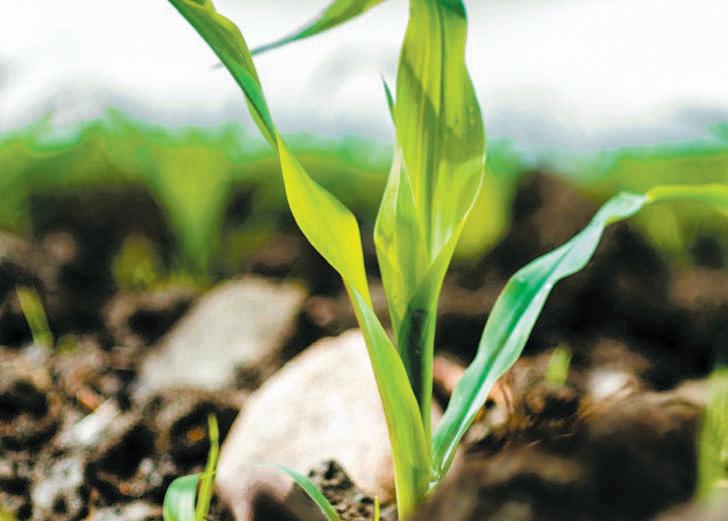
My mother-in-law and I spent hours of Memorial Day weekend cleaning up old weeds and grass, tilling and trimming. We each got some of our plants and seeds in our planters, but it wasn’t until the day after Memorial Day that either of us got anything in the ground.
After a full day of work and hours of coaching softball, I came home to feverishly plant. There was a chance of rain the next night, and it needed to get done. I think my first row of green beans was relatively straight. The next bowed a little.
And then, after that, things got truly off course. The sun continued sinking below the trees, slightly obscuring any distinguishing marks. After a few rows of green beans, my test-rows of black beans were decidedly crooked. Short-ish rows of peas, I think, were fairly straight. Hard to say, really.
My girls finished feeding their calves and reluctantly joined me to finish up. The garlic — another thing I’m trying for the first time — may be fairly straight. The onions certainly are not. At one point, I definitely got so off that I dug up a few already planted onions from the previous row. My excuse is that the light was dwindling, but my girls would probably say I was rushing to
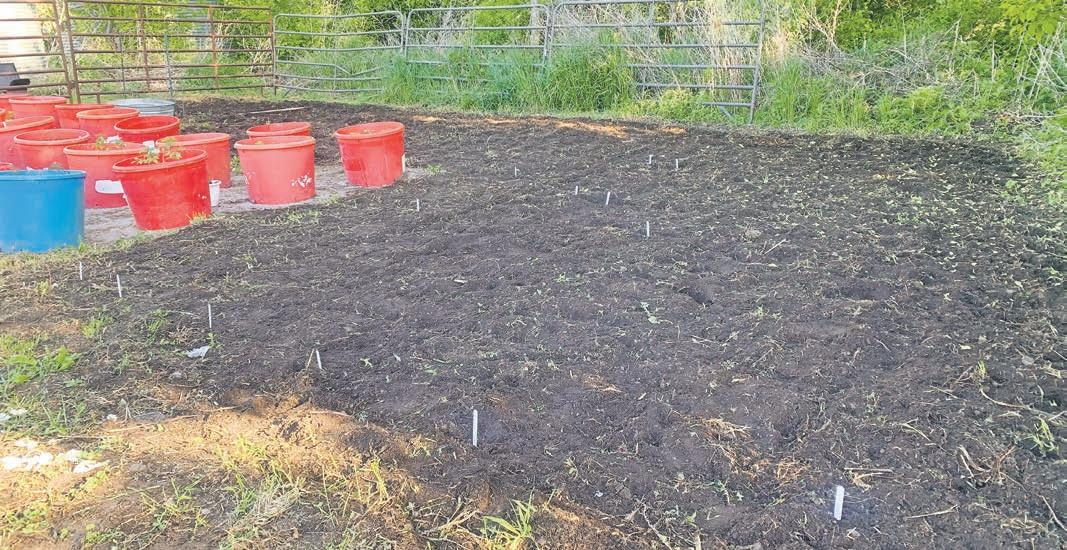
get everything done and not paying attention.
We planted the potatoes in full twilight — not quite dark but certainly not light enough to really know where we were. But I’ve found that my potatoes never really come up where I plant them anyway, instead shooting up through the ground wherever they feel like.
With nothing yet poking out of the ground, no one can see my lack of attention to detail. The little white markers in the ground don’t tell the tale. My shovel and hoe likely will never be guided by GPS, and the lines of my garden will continue to look like an odd finger painting done by a distracted kindergartner. Staying straight certainly would
help me keep the weeds under control before the plants get big enough to identify. But other than that, I think the produce that comes out of crooked rows will likely taste just as good as in straight rows.